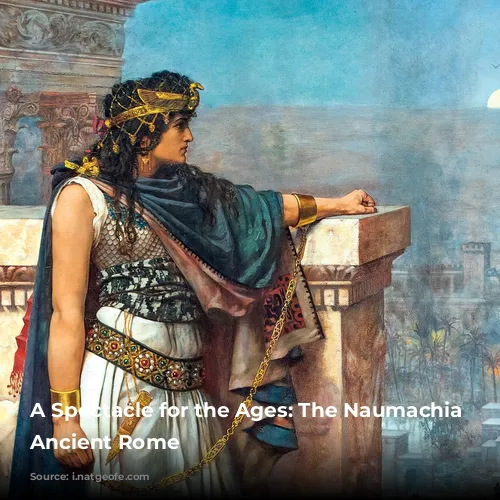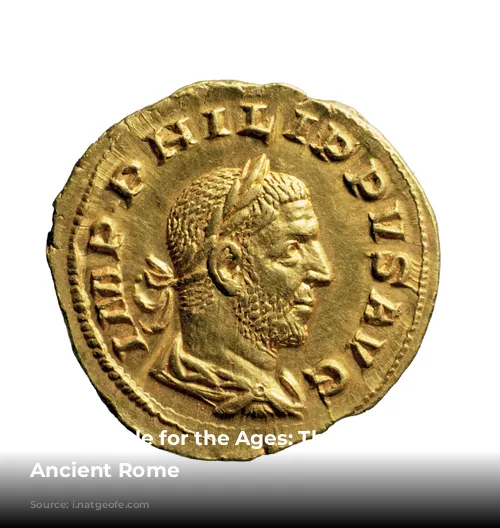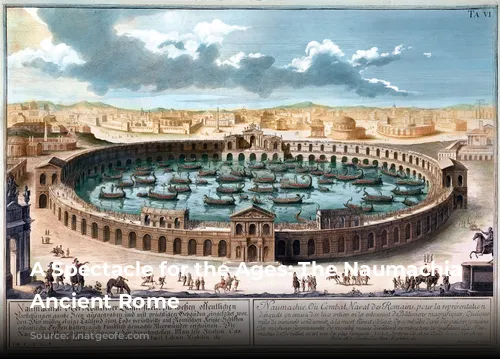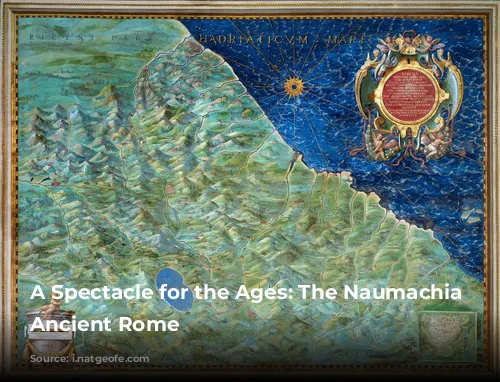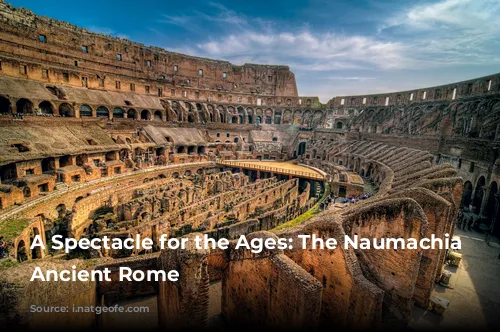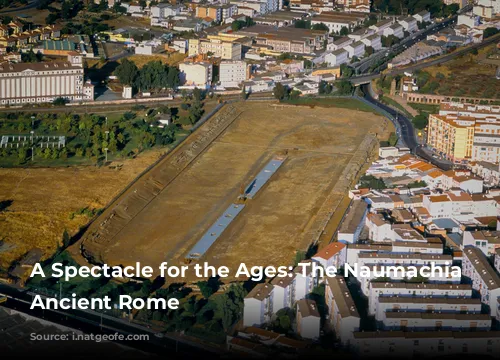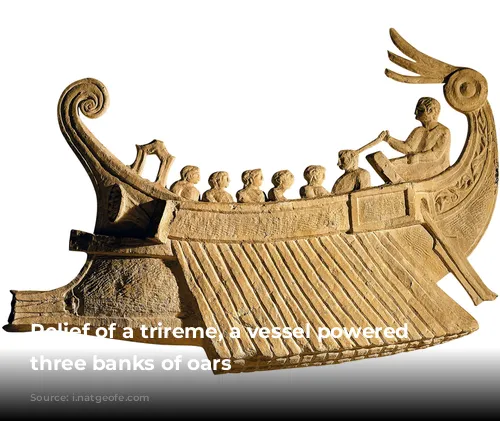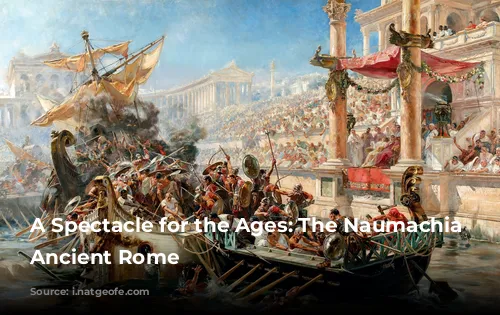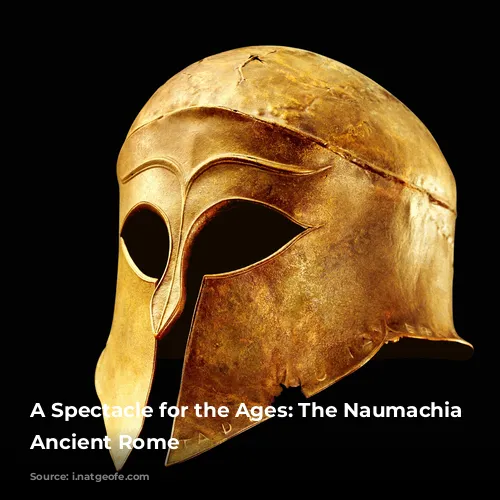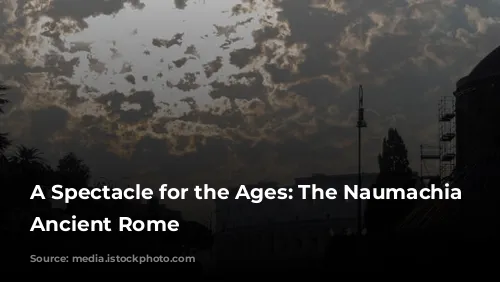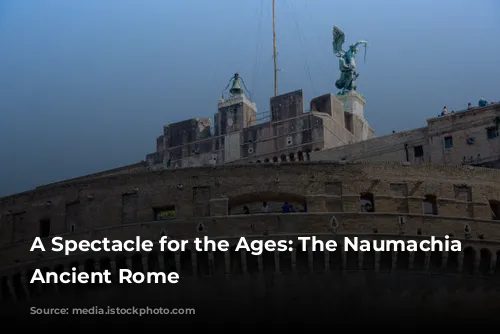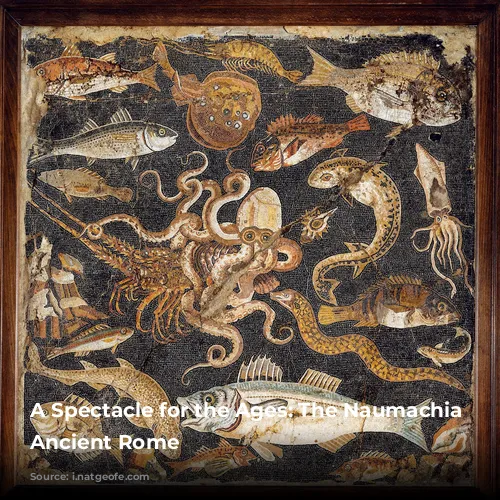Imagine the scene: Rome, 46 B.C. The city bursts with excitement. Julius Caesar, having just vanquished his foe Pompey the Great, returns home a triumphant victor. The streets throng with jubilant citizens, and the air hums with the energy of celebration. The mighty Caesar, now dictator, makes his way through the cheering throngs, his grand procession illuminated by torches carried atop the backs of elephants. This is just the beginning of a celebration that will forever etch itself into the annals of Roman history.
A World of Wonders
The Roman people, always eager for a spectacle, were treated to an extraordinary sight – a giraffe, a creature previously unknown to them, was paraded through the streets, its exotic beauty drawing gasps of awe. This was, however, just a prelude to an event that would dwarf even the giraffe’s allure.
Across the city, preparations were underway for a mind-boggling spectacle: a naval battle on a lake, built by human hands, in the heart of the Campus Martius. The Tiber River generously provided the water for this artificial sea, and the spectacle was nothing short of breathtaking.
A Battle of the Seas, on Land
Two mighty fleets, manned by thousands of galley slaves and crew, clashed in a spectacular reimagining of a naval battle. These were not mere toy boats, but fully functional biremes, triremes, and quadriremes, each a testament to Roman ingenuity. The streets surrounding the lake were a bustling marketplace, teeming with vendors, thieves, and even sex workers, all eager to be part of the grand celebration. The enthusiasm was so palpable that some people even slept overnight in the streets to secure the best viewing spots. Tragically, the sheer volume of attendees led to a tragic crush, claiming the lives of several people, including two senators. This was the birth of the naumachia, a spectacle that would capture the Roman imagination for centuries.
A Legacy of Entertainment and Power
The naumachia, along with the gladiatorial contests (munus) and exotic animal hunts (venatio), became a staple of Roman entertainment. These events were more than mere diversions, they were a potent demonstration of Roman power. They showcased the empire’s engineering prowess, military strength, and the unmatched scale of its civilization.
A Carefully Choreographed War
Caesar’s naumachia, considered the most elaborate of its kind, was no mere brawl. It was a meticulously planned and executed reenactment of a historic battle between the fleets of Tyre and Egypt, two of Rome’s long-standing adversaries. Later naumachiae would replicate other historical battles, such as the clashes between Athens and Persia, or Rhodes and Sicily.
Blood and Spectacle
Despite the theatrical elements, these events were far from simulations. They were real battles, albeit staged ones, where violence, bloodshed, and even drowning were commonplace. The participants, known as naumachiarii, were often prisoners of war or condemned criminals. They wore the uniforms of the opposing factions, turning the event into a macabre theater of war. Even free men participated in the naumachiae, with one high-ranking official, a praetor, documented as taking part in Caesar’s grand spectacle.
A Masterpiece of Planning
The immense scale and complexity of these spectacles explain why only a handful were held after Caesar’s groundbreaking naumachia. The costs were astronomical. They demanded a colossal budget, a suitable location, a team of skilled engineers and craftsmen to build the theater, seating, and ships, and a large workforce to bring the spectacle to life.
The Naumachia Takes to the Open Sea
Some naumachiae, however, took place on natural bodies of water. In 40 B.C., Sextus, the younger son of Pompey, staged his own naval show in the Strait of Messina, between Sicily and Italy. He chose to re-create his own naval victory over Octavian, his rival, a deliberate act of defiance.
Claudius’s Aquatic Grand Finale
A century later, Emperor Claudius staged his own naumachia on Lake Fucine in central Italy. This elaborate reenactment, showcasing the historical battle between Sicily and Rhodes, involved a staggering number of participants – 100 boats and 19,000 combatants, all convicts! To ensure they fought with fervor, armed guards patrolled the lake. Despite the use of convicts, Tacitus, the Roman historian, observed that the battle was fought with the bravery of free men, and those who survived were granted their freedom.
The Theater of the Naumachia
Natural bodies of water, while more affordable, were not ideal for viewing. The spectacle was, after all, the primary purpose of these events. This led to the creation of dedicated theaters, where the naumachiae could be enjoyed by vast audiences. The very act of creating an enormous lake, equipped with stands, became an integral part of the performance.
The Legacy of the Naumachia
Julius Caesar’s first naumachia was held in a massive artificial lake, which was filled in after the event, likely to prevent the spread of disease from stagnant water. Augustus, in 2 B.C., created a similar lake on the Tiber River, a location that became known as the Naumachia Augusti, used regularly for these spectacles. The term “naumachia” began to encompass both the lake and the spectacle itself.
The Naumachia Takes Stage in the Amphitheater
Some emperors took a different approach, flooding amphitheaters with water to stage their naumachiae. Nero, the infamous emperor, inaugurated this trend in A.D. 57, holding a naval battle in a wooden and stone amphitheater he had built in the Campus Martius. The structure, known for its impressive speed in being flooded and drained, tragically burned down in the Great Fire of Rome.
The Colosseum and the Naumachia
The Colosseum, the most iconic symbol of ancient Rome, was also used for naumachiae. In A.D. 80, Emperor Titus, as part of the Colosseum’s dedication, held two naumachiae, one on the artificial lake created by Augustus and the other within the Colosseum itself. The Colosseum’s unique design, constructed on the site of an artificial lake, allowed for easy flooding and draining.
The End of an Era
Other emperors, such as Trajan and Marcus Julius Philippus, continued the tradition of the naumachia, each adding their own unique flair to the spectacle. Trajan’s naumachia, held in a pool near Vatican Hill, celebrated his conquest of Dacia. Philip the Arabian’s naumachia, held in 248 A.D., marked the thousandth anniversary of Rome’s founding.
However, the popularity of the naumachia began to wane in the third century, possibly due to the Roman Empire’s declining strength and financial woes. Philip’s naumachia was the last recorded naumachia of its kind in Roman history.
The Lasting Legacy of the Naumachia
While the naumachiae faded from Roman life, the fascination with these events endured. They continued to be remembered as a testament to the emperors’ megalomania and the Romans’ insatiable appetite for public spectacles. The Renaissance witnessed a revival of naumachiae, albeit in a less violent form. King Philip IV of Spain hosted a naumachia in Madrid, while another was held in Valencia to commemorate the canonization of a local saint.
The popularity of naumachia-inspired spectacles even reached England in the 19th century, with Sadler’s Wells theater staging performances of these grand naval battles. However, the craze eventually faded. The combination of historical detail and unrestrained violence that characterized the Roman naumachia appears to be a uniquely Roman phenomenon.
The naumachia stands as a testament to the ambition, extravagance, and barbarity of Ancient Rome. It was a grand spectacle that captured the imagination of a powerful empire, leaving a lasting legacy of entertainment and spectacle.
